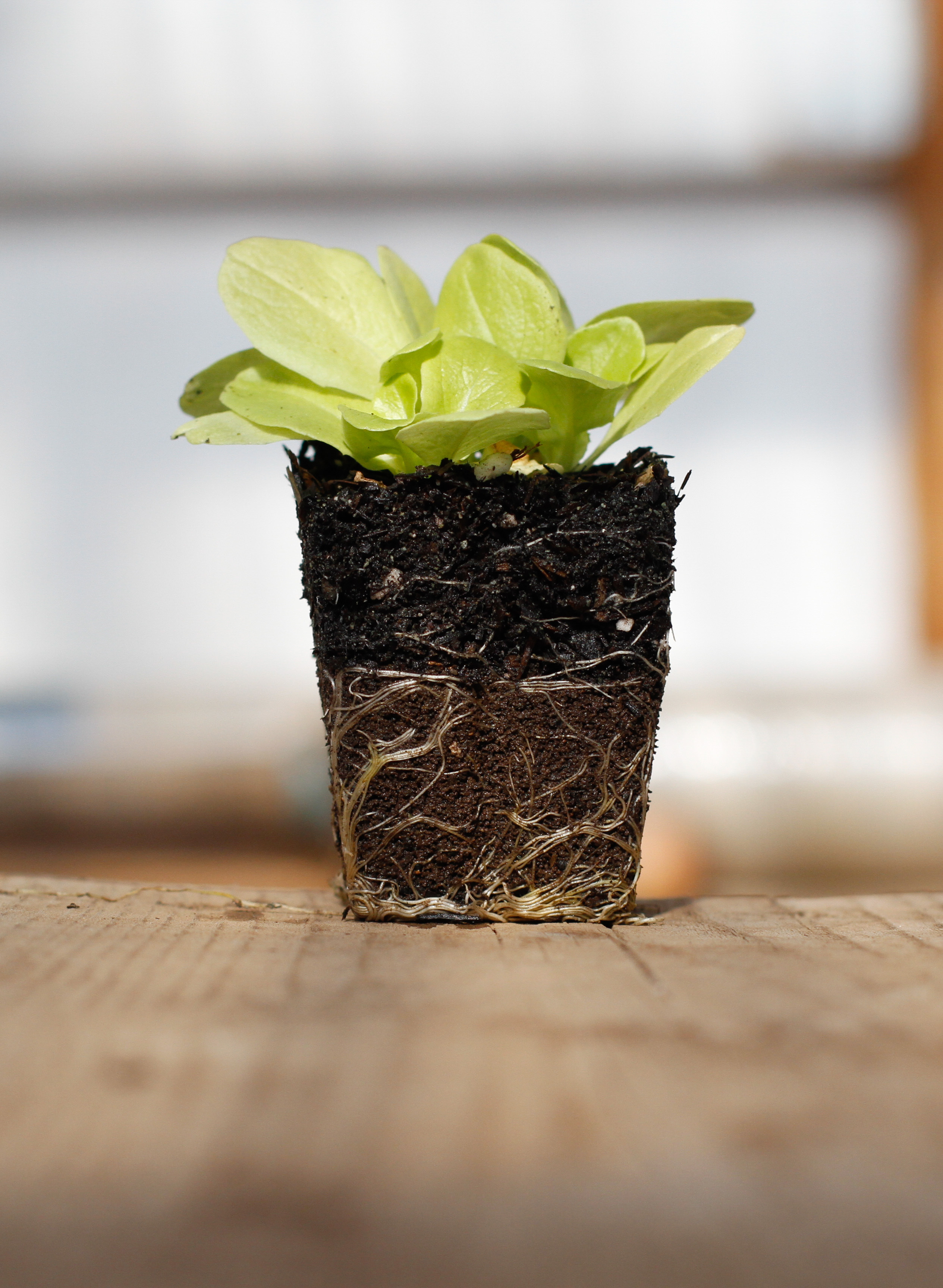The GardenZeus Guide to Buying Vegetable Seedlings

Oh, the horror! the horror! that GardenZeus expert Darren Butler has seen with vegetable seedlings offered for retail sale. The health, vigor, and future yield of most vegetables are highly dependent on what happens to the plants during their first weeks of life, from germination to transplant and early establishment. Nursery display racks, big-box-store tables, and other retail-shopping areas usually don’t provide the the environment and care that baby vegetable plants need to get off to a good start.
Perhaps the most common problem with retail seedlings is that they are often kept far too long in small pots or cells, for multiple weeks or months rather than a week or two. After germination, most vegetables enter a rapid growth period, during which time they increase quickly in size and establish larger root systems with uncountable interconnections and relationships with soil and helpful microbes. If baby veggies are stuck in cells or small pots, they may miss this growth period to their permanent detriment for most vegetables. Rootbound starts tend to be prone to slow establishment, poor growth and yield, diseases, pests, and other problems.
When buying transplants, check for rootbinding: tap the pots, cells, or containers and slide them partly off to look at roots. Some visible roots or a freckling of white roots at the edges of rootballs are acceptable; overgrown, circling, netted, or layered roots at pot edges and bottoms indicate that the seedling is rootbound. Save yourself the hassle and disappointment of slow-growing, stunted, or unproductive garden plants by avoiding these seedlings. Exposed roots at the soil surface may indicate forceful or careless watering.
We may often be drawn to the biggest seedlings – a better value for the price, right? Under equivalent conditions, smaller and younger seedlings will generally outperform those that are larger and rootbound.
Look for vigorous plants with strong and undamaged stems. Leaves and stems for most vegetables should be a healthy green color, with minimal or no yellowing and no spotting, blemishes, discoloring, or other signs of disease, disorders, or insect infestation. Avoid buying leggy seedlings, which may have been grown without sufficient light or in close competition with other seedlings.
Avoid seedlings with blossoms or immature fruit. They have already entered their reproductive cycle; this is a condition called “early senescence.” Blossoms indicate that a seedling has become stressed or its roots have been constrained too long. For most vegetables, there is no return to seedling childhood once they are in flower; the plants will remain miniature adults from that point onward, and there may be little or nothing to be done thereafter to encourage the plants to grow to full size and yield normally. Little peppers or tiny broccoli florets may be charming or even adorable on a seedling, but consider this may be most or all of your harvest from that plant.
Vegetables that are best-suited for planting as purchased transplants include lettuce and tomatoes.
Some vegetables hate root disturbance and are prone to performing poorly when transplanted, even when seedlings are healthy, including most bean varieties and carrots; these vegetables should be seeded directly. Skilled, adventurous, or biointensive gardeners may succeed in transplanting these vegetables during a very short window when seedlings are tiny, if transplanting is done with the required care, skill, and timing to avoid problems.
Other vegetables are less fussy but should still be transplanted within a short window, after germination and before their roots encounter the sides or bottoms of cells or pots, often within about 2 weeks of germination for best results, including chard, cucumber, muskmelon, pumpkin, summer squash, winter squash, and zucchini. These vegetables should not be purchased or transplanted if you cannot confirm that they are free of root binding or if you don’t know how long they have been in cells or pots. They are suited to transplanting by focused, experienced, or skilled biointensive gardeners willing to start their own seeds and monitor seedlings carefully, but generally should not be purchased as transplants.
Chain nurseries may carry the same vegetable varieties across large regions of the country, and even small and independent nurseries may purchase seedlings from larger distributors without confirming that varieties are ideally suited to local climate and growing conditions. Refer to the GardenZeus section “Recommended Varieties/Cultivars” for each vegetable type, or know the varietal characteristics needed before purchasing transplants, especially when buying via internet, mail, or from any retailer whom you suspect might not know or have paid close attention to your local climate and growing conditions. You may want to prepare a list of vegetable varieties that you have vetted for your garden or grown successfully in past years and refer to the list when purchasing transplants.